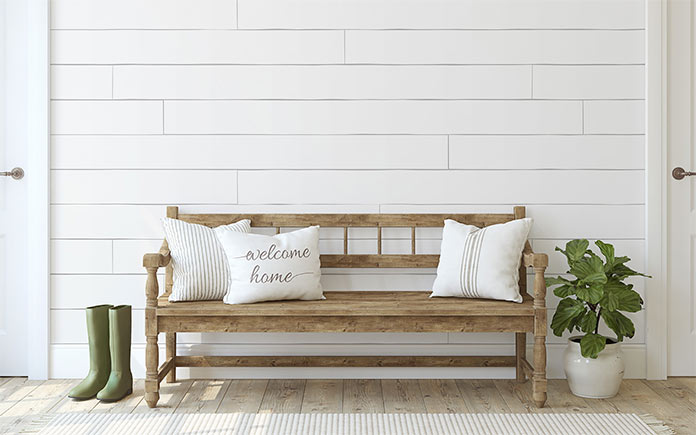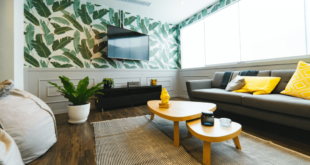
If you’re looking to refresh your home and want to give a room some instant texture and character, just install shiplap on the walls.
Shiplap is popular because it’s both functional and stylish. For instance, traditional shiplap boards have rabbet joints, or grooves, on both ends, linking them together for an easy, secure fit. This interlocking, water-tight design was especially useful for shipbuilding, hence, the name.
For decor, rabbet joints hide the interlocking connections and offer a graceful transition between each board. The result is a flush appearance that provides clean lines and rustic charm.
Reclaimed shiplap from old homes and boats is always in demand because it comes complete with the rabbet joints and just requires cutting to fit your space.
If you lack access to authentic shiplap, but still want this look, it’s possible to create a similar accent wall with lauan plywood.
Whether you use reclaimed wood or plywood from the home center, installation is pretty much the same thanks to innovations in construction.
Just follow the steps applicable:
1. Cut sheets of 1/8-inch lauan plywood lengthwise. You’ll want the strips as wide as you want each board. The length of the boards can match your wall’s entire length if you don’t want vertical seams. Or you can choose a consistent width for each plank. Either option is fine; it just depends on your preference.
2. Paint or stain each piece, including the edges.
3. Mark the locations of outlets or wall switches so you can cut them out before you install the boards.

4. Apply beads of Titebond Ultimate TiteGrab Adhesive to the back of each board and place each plank on the wall. Start from the bottom of the wall and work your way up. Titebond Ultimate TiteGrab Adhesive offers twice the initial bond strength of similar adhesives. That means it grabs heavy materials quickly, which reduces the time required for bracing, and the result is a permanent bond that doesn’t require finishing nails. Best of all, the waterproof formula is forgiving. If you mess up on one of the boards during installation, quickly adjust it.

5. Press and hold each plank for a few seconds, and then move up to the next plank. As you move up the wall, alternate the vertical seams’ locations so they aren’t too close to each other.
If you stained the wood, apply a coat of sealer after you’ve placed all the boards.
Creating a faux shiplap wall with simple lauan plywood, stain and sealer is fast and easy. You’ll just need a table saw to rip the boards, or you can have them precut at the home center.

Whether you tackle this project with plywood or authentic shiplap, the magic ingredient — and the real time-saver — is the installation.
That’s why it’s perfect for do-it-yourself enthusiasts!



